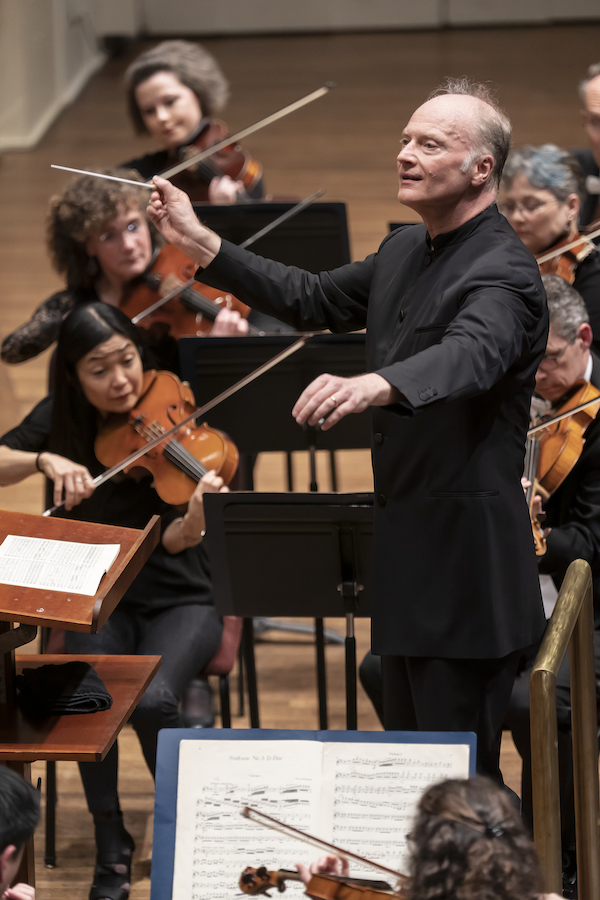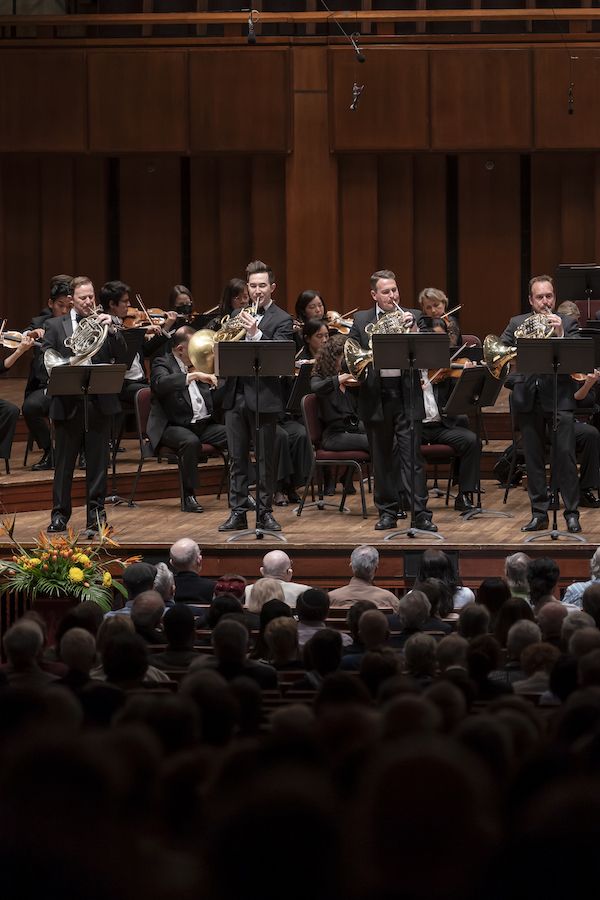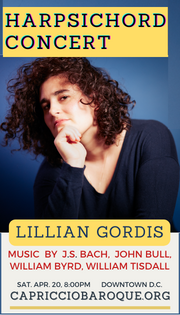Horns to the fore in Noseda’s delightfully offbeat NSO program

Gianandrea Noseda conducted the National Symphony Orchestra in music of Schumann and Fanny and Felix Mendelssohn Thursday night. Photo: Scott Suchman
Gianandrea Noseda is leading the National Symphony Orchestra in an early romantic smorgasbord this week. Overtures by Fanny Mendelssohn and her better-known brother, an early Schubert symphony, and a Schumann curiosity featuring the orchestra’s horn section, all heard Thursday night in the Kennedy Center Concert Hall, did not produce uniform results. Still, the variety of flavors diverted the musical palate.
Fanny Mendelssohn, who had married Wilhelm Hensel in 1829, composed her Overture in C Major around 1830. Performed at the house concerts hosted by the Mendelssohn family, it would remain her only real work for orchestra. Inventive and lively, but without any particularly salient ideas, the piece featured the warm lushness of the NSO strings and a crisply articulated fast section, with beautifully tuned and balanced woodwinds and brass.
The NSO’s top four horn players, rather than their normal back-row position, took pride of place in front of the orchestra for the program’s main attraction, Robert Schumann’s Konzertstück for four horns. Written in 1849, the work premiered in Leipzig the following year, just before the composer’s disastrous move to Düsseldorf, which led to an 1854 suicide attempt and his commitment in a mental asylum.
The work opened with a brilliant salvo from the four horns, on the triplet-motif hunting calls that run through the first movement. James Nickel, Markus Osterlund, and Robert Rearden played with exceptional sensitivity and solidity on the second, third, and fourth horn parts, respectively. Principal Abel Pereira, however, stole the show on the high-flying first horn part, hitting the many high Cs in the first movement, the couple high Ds in the third movement, and even a sensational high E (indicated as optional in the score).

The NSO horns were featured as soloists in Schumann’s Konzertstück for four horns. Photo: Scott Suchman
The moody slow movement revealed Osterlund and Rearden on the lower parts, just as confident in some exposed solos. In the third movement, the final accomplishment of these four players was near-perfect coordination of parallel sixteenth notes rocketing upward in all four instruments, a feat Schumann called for twice, marking it “Mit Bravour.”
After intermission—wrongly placed in the program to the audience’s confusion—came the more famous overture by Fanny’s younger brother, Felix Mendelssohn. Known as The Hebrides, from the Scottish islands that inspired the music, it was composed around the same time as Fanny’s overture. The four horn soloists from the Schumann took the rest of the evening off, leaving the horn parts on the second half to their colleagues.
Noseda emphasized oceanic swells and fast, even anxious tempi, the latter to a fault in terms of ensemble cohesion, with one odd passing brass clam apart standing out. While it was a passing slip, it seemed symptomatic of the impetuosity of Noseda’s approach in this instance.
The Hebrides was the only piece on the program that could be called familiar, another example of Noseda’s inventive programming. He ended with the earliest work of the evening, Franz Schubert’s youthful Third Symphony. The 18-year-old composer wrote it in the summer of 1815, at a time when Beethoven, still alive, had completed only eight symphonies. Schubert was miserable, teaching in his father’s school, but also studying composition with Antonio Salieri, one of the obvious influences on this ebullient but limited piece.
With an even smaller number of string players, the performance felt chamber-like in scope. The first movement’s pensive slow opening gave way to its rather chirpy Allegro section, with fine clarinet solos on the main theme. The high point of the work was the charming, but still light slow movement, gracefully paced by Noseda for more elegant flute and clarinet lines.
A fast tempo enlivened the brief Menuetto, a trifle that went by quickly, with the most interest found in the Trio, where the oboe and bassoon poked along in collegial thirds. Agility and balance predominated in the last movement, a tumult of dotted rhythms and skittish figuration. Schubert’s odd gesture in the final minute of the finale, to come to rest suddenly on a G major chord in first inversion, was seemingly just to provide the listener a chance to catch a breath.
The program will be repeated 11:30 a.m. Friday and 8 p.m. Saturday. kennedy-center.org







Posted Apr 28, 2023 at 11:42 pm by Bob Duggan
There is a ” high e” in the first part in the first movement at the end of the movement.
It was great to hear them in such fine form